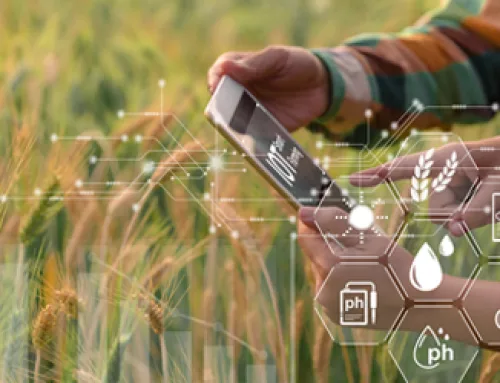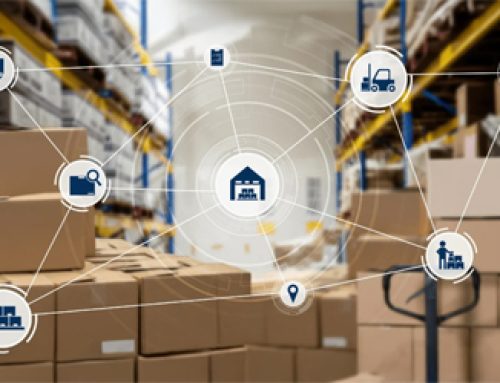Unlocking Agricultural Potential: Exploring the Role of Digital Agriculture Management Platforms
Isn’t it fascinating how farming has evolved over the past few years? More and more farmers & agribusinesses are embracing technology to enhance their farms while being kinder to the environment. According to a Statista report (make it nofollow), the global market value of smart farming will witness a staggering growth, from 17.6 billion U.S. dollars in 2023 to 33 billion U.S. dollars by 2027.
A significant aspect of this transformation is the emergence of digital agriculture management platforms. These platforms offer farmers a range of tools and insights to optimize their operations. But what exactly do these platforms do, and how do they contribute to the overall success of agriculture?
Let’s delve into the world of digital agriculture management platforms and uncover how they’re revolutionizing farming practices.
Enhanced Decision-Making with Real-Time Data
Imagine having a tool that gives you constant updates on how your farm is doing. That’s what digital agriculture management platforms offer. They gather data from sensors, satellites, and weather stations, giving agribusinesses a clear picture of what’s happening in their fields. With this information, they can make decisions about planting, irrigation, fertilization, and pest management. The best part? All of this can happen in real-time. So, if there’s a problem like pest infestations or nutrient deficiencies, you’ll know right away and can take action before things get worse. These platforms aren’t just about data – they’re about helping agribusinesses make smarter choices that can lead to better harvests and save money in the long run.
Precision Farming for Optimal Resource Management
Digital tools have revolutionized farming, helping agribusinesses optimize their resource usage while safeguarding the environment. By analyzing data on soil quality and crop health, these tools generate insightful maps and plans. Ever wondered how farmers decide on the right amount of water and fertilizer to use? These tools take the guesswork out of the equation, ensuring resources are utilized efficiently and sustainably. With their assistance, agribusinesses can boost crop yields while
minimizing costs. Moreover, these tools enable farmers to fine-tune their inputs, aligning supply with demand and mitigating the risks of over- or underuse. The outcome? Higher productivity, reduced expenses, and a decreased environmental impact.
Streamlined Operations and Workflow Automation
Picture this: Instead of manually setting reminders for watering crops or constantly checking on machinery, farmers can rely on digital platforms to handle it all. Need to know if a tractor needs maintenance or how much fertilizer is left? It’s all there at the click of a button. Digital agriculture platforms can simplify operations and save a lot of time and effort for agribusinesses. These platforms have tools for scheduling tasks, keeping an eye on equipment, managing supplies, and tracking labor. But here’s where it gets even better: with automation features like sensors and self-driving machines, repetitive tasks are taken care of. This frees up valuable time for agribusinesses to focus on more strategic tasks such as crop scouting, marketing, etc.
Data Integration and Collaboration
Digital farming tools are transforming the landscape of agriculture, benefiting stakeholders across the board – from agribusinesses to advisors and buyers. These tools serve as a centralized hub for storing and exchanging crucial information, facilitating seamless communication. Wouldn’t it be great if field supervisors could effortlessly share data with advisors and gain valuable insights on optimizing crop growth. By bridging these connections, digital agriculture management platforms remove barriers and foster collaboration, which ultimately results in enhanced productivity, profitability, and sustainability.
Enhanced Resilience and Risk Management
Digital agriculture management platforms are game-changers when it comes to managing risks in farming. They serve as invaluable resources for agribusinesses, offering insights into crucial factors like weather patterns and market dynamics. With these platforms at their disposal, agribusinesses can anticipate challenges such as adverse weather conditions or fluctuating prices. For instance, they can proactively safeguard their crops against drought by taking preventative measures. Additionally, they can stay informed about market trends and make informed decisions regarding the optimal timing to sell their produce. In essence, these tools help agribusinesses handle risks better and keep farming going strong for the long run.
FarmERP: Revolutionising Agriculture Management
Picture the fast-paced world of modern agriculture, where every decision counts and efficiency is key. In this landscape, agribusinesses need more than just gut instinct to succeed. That’s where FarmERP steps onto the scene, providing a holistic solution to streamline farm operations and boost yields.
While ERP systems have been around in agriculture for a while, FarmERP stands out as a top-tier plantation and farm management platform tailored to meet today’s evolving needs. By offering a centralized hub to oversee everything from crop production to inventory and sales, FarmERP gives agribusinesses the edge they need to stay competitive.
In an age where challenges like monitoring pesticide usage and meeting food safety standards are on the rise, FarmERP specializes in crafting robust strategies to tackle these hurdles head-on. With features designed to handle everything from crop protection to pricing pressures, FarmERP arms agribusinesses with the tools to adapt and thrive.
What sets FarmERP apart is its ability to go beyond traditional ERP functions. Ever wondered what it would be like to have a tool that not only provides valuable insights into expected yields but also optimizes resource allocation and ensures compliance with regulations? These capabilities enable agribusinesses to make smart, informed decisions that drive productivity and profitability.
In summary, FarmERP represents a significant advancement in agriculture management. It’s not just about surviving; it’s about thriving in today’s competitive landscape. With its comprehensive features and innovative spirit, FarmERP is poised to revolutionize farming practices, ensuring a sustainable and profitable future for all.
Digital Agriculture Management Platforms: Empowering the Promising Future of Agriculture Sector
In conclusion, digital agriculture management platforms are revolutionizing the agriculture industry by providing agribusinesses and agricultural businesses with the right tools and insights to optimize their operations. Following are the benefits of digital agriculture management platforms:
- Enhanced Decision-Making: Real-time data empowers agribusinesses and agricultural businesses to make better decisions.
- Precision Farming Techniques: These platforms enable the adoption of precision farming methods, leading to optimized resource usage and increased yields.
- Streamlined Operations: Digital tools streamline various aspects of farming operations, saving time and resources.
- Facilitated Collaboration: Agribusinesses can easily integrate data and collaborate with other stakeholders in the agricultural value chain.
- Resilience and Risk Management: By providing insights into weather patterns, market trends, and potential risks, these platforms help agribusinesses anticipate and mitigate risks effectively.
- Driving Innovation and Efficiency: As digitalization continues to transform the industry, these platforms will play a central role in driving innovation, efficiency, and sustainability.
As digitalization continues to transform the agriculture industry, digital agriculture management platforms will play an increasingly central role in driving innovation, efficiency, and sustainability, ensuring the long-term viability and resilience of agriculture for future generations. Contact us to learn more about how FarmERP empowers agribusinesses and enhances the efficiency of agricultural operations.



